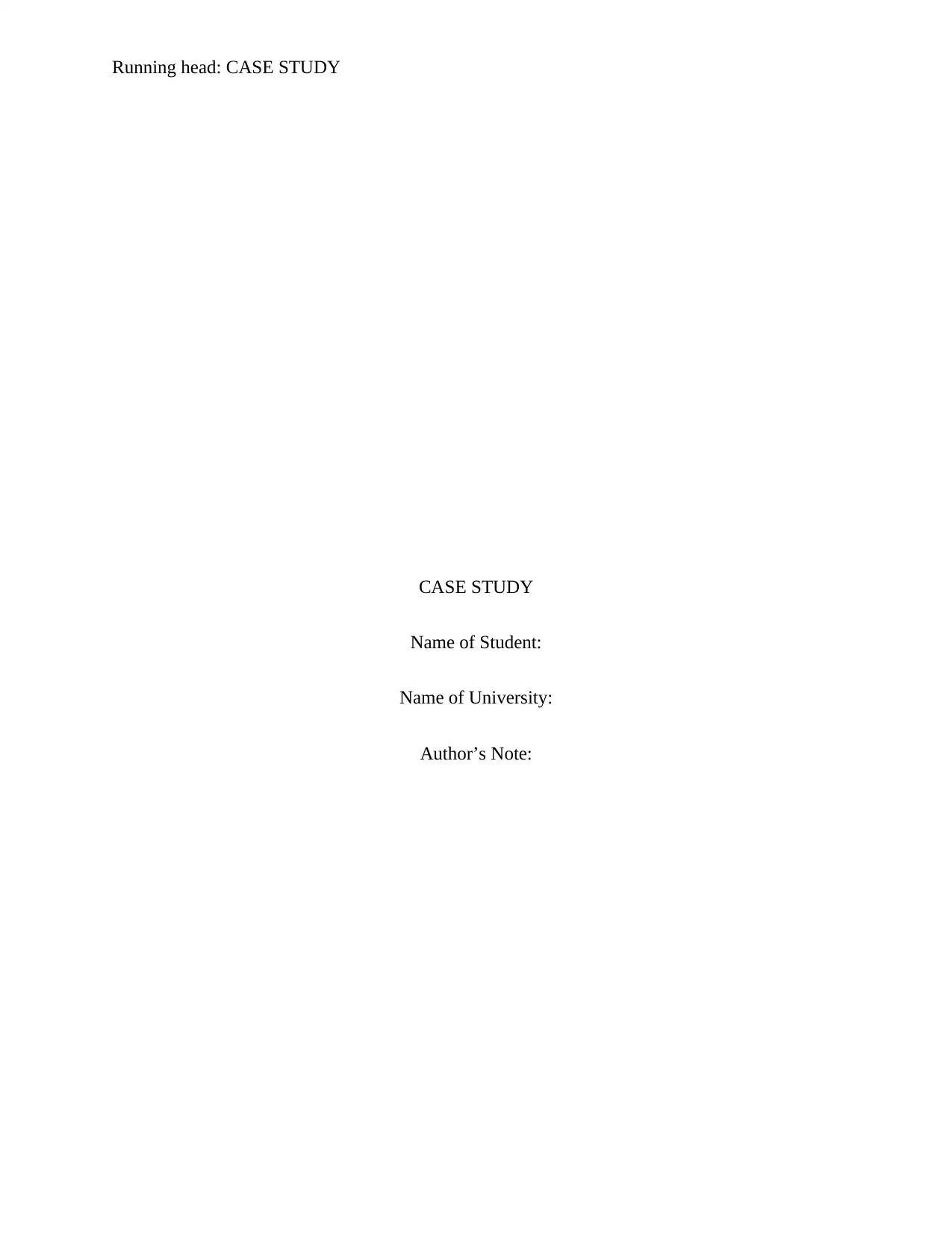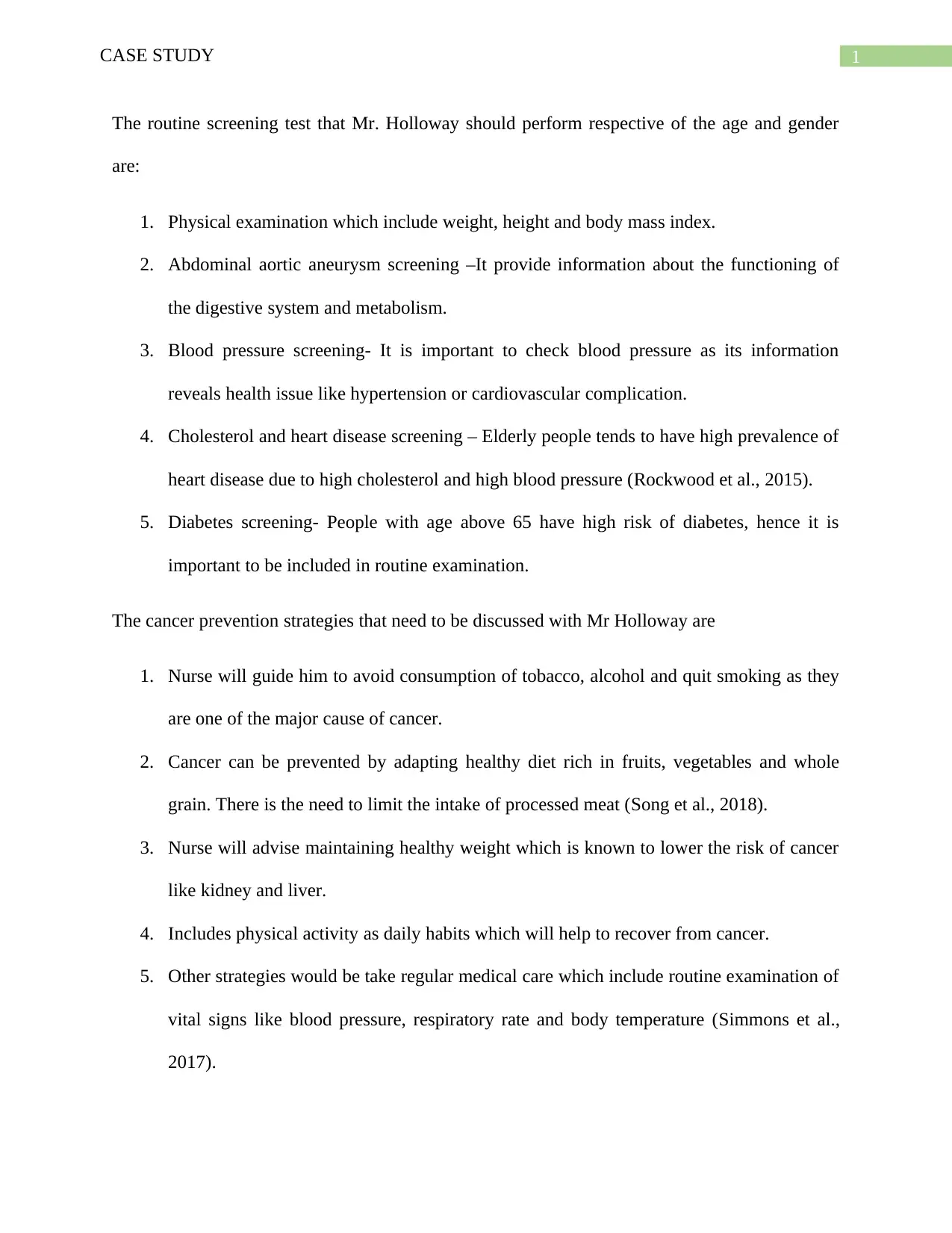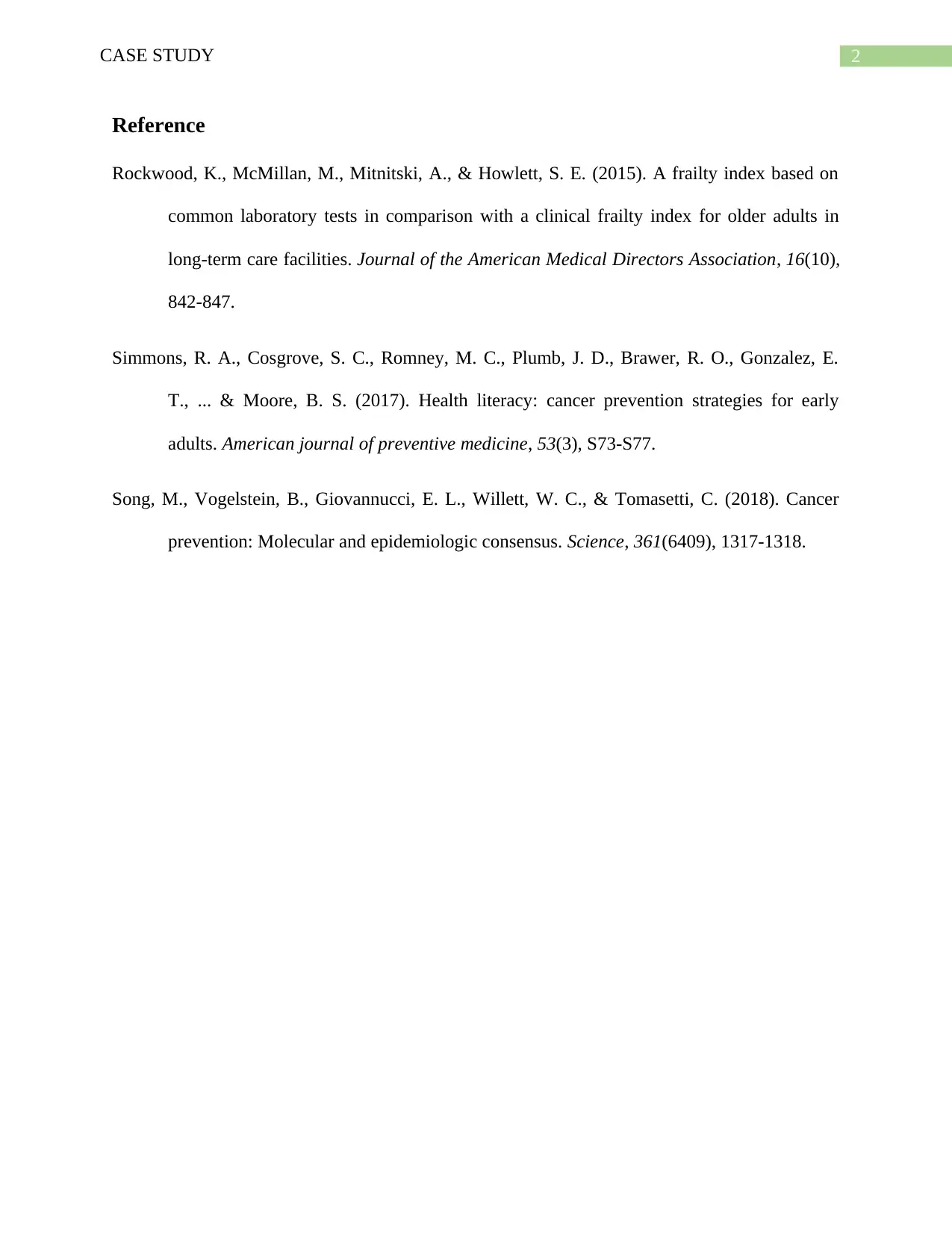Case Study: Health Assessment, Screening, and Prevention Strategies
VerifiedAdded on 2022/09/14
|3
|456
|20
Case Study
AI Summary
This case study examines Mr. Holloway's health assessment, focusing on routine screening tests, including physical examinations, and screenings for abdominal aortic aneurysms, blood pressure, cholesterol, and diabetes. The study emphasizes the importance of these screenings for maintaining health, particularly in older adults. Furthermore, it discusses cancer prevention strategies, such as avoiding tobacco and alcohol, adopting a healthy diet rich in fruits, vegetables, and whole grains, limiting processed meat, maintaining a healthy weight, and incorporating physical activity. The study highlights the role of regular medical care, including routine examinations of vital signs, in promoting overall health and preventing disease. The assignment uses references to support the discussion, providing evidence-based recommendations for Mr. Holloway's health management.
1 out of 3










![[object Object]](/_next/static/media/star-bottom.7253800d.svg)